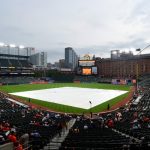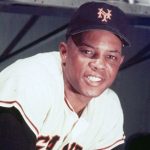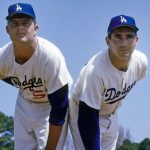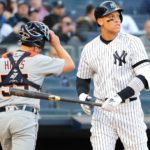Baseball 2019: Brute Force, Full of Surprises
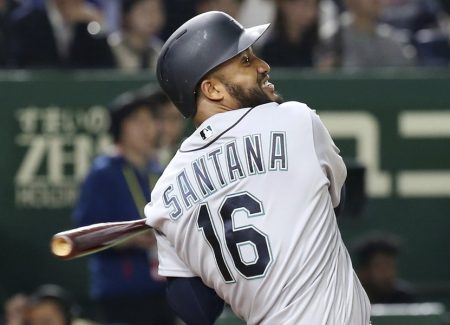 The 2019 season is in full swing and already, 10 percent in, it’s a season that has fallen prey to the same problems that bedeviled baseball the last quarter century. Too many home runs. Too many strikeouts. Too few base hits and baserunners. In short, too little action on the base paths.
The 2019 season is in full swing and already, 10 percent in, it’s a season that has fallen prey to the same problems that bedeviled baseball the last quarter century. Too many home runs. Too many strikeouts. Too few base hits and baserunners. In short, too little action on the base paths.
It’s about brute force.
Homers, Strikeouts and Walks
Some writers say the games have become boring, long, and predictable. Joel Sherman of the New York Post writes, The sport is on a per-game record pace for homers, strikeouts and hit by pitch, and walks are at a two-decade high. Through the first 180 games this season, there have been 467 home runs. That projects to 6,318 for the season. The record is 6,105, set in 2017.
No wonder every announcer has their launch angles and exit velocity data at their fingertips. It’s even critical to discuss distance. In a game last week between the Toronto Blue Jays and the Boston Red Sox, Rowdy Tellez, the Toronto first baseman, lofted a two-run home run deep into the right-field stands putting Toronto up 5-0 in a game they would lose 7-6 in the ninth inning.
The three Boston announcers almost immediately said the home run traveled more than 500 feet. It clearly did not. They wasted several moments arguing distance, as opposed to addressing Nathan Eovaldi’s lack of control in yet another start.
Moments later, they corrected themselves, saying the ball could not have traveled more than 400 feet. In the end, did it matter? The ball was clearly a two-run home run. But the announcers made such a big thing about the distance, and for no reason, other than to discuss a home run. Since home runs have become the central pillars of today’s MLB. It’s brute force. Why not drone on about them?
Sherman further writes, despite the issues, that 30 teams are devising ways to win with little care about. . . entertainment value. Throwing hard and swinging hard with the concept of getting the ball in the air have proven of great value, triggering a vicious cycle of homers, strikeouts, walks and hit by pitch.
There it is. The game, once fun to watch, is now about brute strength. Everywhere. The mound. Second base. Center field. The dugout. And especially the bullpen, where NFL-like linebackers scurry to the mound ready to deliver heat to the hitter.
A Half-Century Ago
Gone are some of the great all-around players. Luis Aparicio. Brooks Robinson. Keith Hernandez. Paul Molitor. Ozzie Smith. Rod Carew. George Brett. Lou Brock, Maury Wills. And Rickey Henderson.
All of them skilled practitioners of the game. Some of them Hall of Famers. But all of them were fun to watch and made the game more interesting with great defensive acumen. Offensive skills. Speed. Their ability to do the little things that win games, like spanking the ball the other way on hit-and-run plays. Or unnerving the pitcher before stealing bases, as if baseball had legalized thievery.
While on the mound, Whitey Ford, Sandy Koufax, Jim “Catfish” Hunter, Elroy Face and Orel Hershiser, among others, were artists painting canvases with creativity and precision. Completing games, pitching nine innings, using 100 pitches or so.
These men who could change games with their legs, their gloves, their bats and their arms—their all-around talents—have given way to specialists, most of whom do one thing well. Players who could beat you many different ways are now part of baseball history.
Because Money Screams
So, yes, it’s a different game today. Money talks. And hitters and pitchers have adapted to its rules. And as home runs have become the slam dunks of baseball, baseball has forgotten its history. And those who slam dunk with impunity, with brute force, are well paid for it.
What is pejoratively called small-ball baseball—single after single, walks, sacrifice bunts, moving the runner over on a productive out—all of it is seen less and less in 2019. lts replacement, momentarily exciting, rally-killing home runs, diminishes enthusiasm quickly. Yet that is the game of baseball today because teams do not pay big money for small-ball.
Surprises in Seattle
Seattle is one of the early season surprises. Leaders of the American League West until earlier this week, the Mariners are driven by some new players this season. Tim Beckham and Domingo Santana are two of them, and Mitch Haniger is a holdover.
Tim Beckham, the first overall pick of the 2008 draft selected by Tampa Bay, seems to have finally arrived. Will this be his year? In this, his age-29 season, he has begun the season with an OPS of .989, he is hitting a robust .317 and has swatted four homers and 12 RBIs in 17 games played. He’s made Seattle’s decision to sign him as a free agent for one-year at $1,750,000 either visionary (if as his numbers so far suggest his season will be stellar) or myopic (if as his numbers so far suggest his season will be stellar) and Seattle will need to ante up a lot more dollars to extend him a multiyear contract next season.
Add to this shrewd decision, Seattle General Manager Jerry DiPoto’s little-noticed trade in December 2018. The swap seems to fall under the heading of daylight robbery. DiPoto moved light-hitting outfielder Ben Gamel and pitcher Noah Zavolas to the Milwaukee Brewers for power-hitting outfielder Domingo Santana.
After 18 games the 27-year-old Santana Is hitting .354 with four home runs and leads MLB with 24 RBIs. His OPS is a solid .977 and he’s one of the reasons Seattle has begun their season so well.
Playing on a $1,950,000 contract, Santana’s first arbitration season begins in 2020, so he will cost more next season, should Seattle decide to retain him.
Mitch Haniger came over in another of Jerry DiPoto’s trades in November 2016.
The Arizona Diamondbacks traded Haniger, Jean Segur and Zac Curtis to Seattle for Taijuan Walker and Ketel Marte. Haniger had a .843 OPS in 2017, an .853 in 2018 and he’s begun with a .931 in 2019. His .284/5 home runs/15 RBIs have contributed nicely to Seattle’s success.
So, Beckham, Haniger, and Santana are three of the reasons Seattle has the third best record in baseball.
And Then Some Things Never Change …
Mike Trout is having yet another magnificent season. First in the Majors in OBP: .593. Second in slugging percentage: .882. And first in OPS: 1.475. But he’s alone, by himself. Not many others on the team help him. Yet the Angels are actually at .500. Better than the Yankees and Red Sox 16 games into the season.
Carlos Santana already has walked 14 times his first 16 games for the Cleveland Indians and his OBP is .531. He may be older, but his batting eye has not lost the contours of the plate. Throw in a .400 batting average and a 1.071 OPS, and it’s clear Santana still deserves his place on an MLB roster.
Anthony Rendon. A .400 average in 55 at-bats, to go along with six homers, 17 RBIs, and a 1.333 OPS. Quite a beginning for the free agent to be.
Bryce Harper and Manny Machado have already homered four times each, on their way to 40 homers, which should justify their $30 million salaries. And while the St Louis Cardinals might be alarmed by Paul Goldschmidt’s .226 batting average and his so-so .932 OPS, his seven home runs and 12 RBIs are respectable in 62 at-bats.
And Some Surprises, Surprise
There are many other brand name players off to promising starts, just as there are question marks and surprises. Jacob deGrom’s last two sloppy starts raise red flags. The Boston Red Sox starters are still climbing out of their opening season woes. And Mookie Betts .324 OBP/.737 OPS opening salvo in 2019 has to worry Boston. Maybe he should have accepted Boston’s $200 million offer?
While Pete Alonso’s 1.181 OPS in his first 59 electrifying New York Mets at-bats may portend greater possibilities for the Mets in 2019. Now, if only the Mets had hired Chaim Bloom as their GM, perhaps the Austin Meadows and Tyler Glasnows of the world might be traded to the Mets. Not the Rays.
